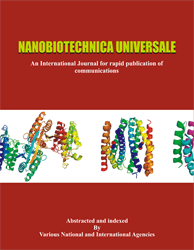Trends and flows - The Gravity model of India’s Rice Trade
Kuppan Mohanakrishnan*1, S. Ravichandran2 , R. Venkataraman3 and S. Ramesh4
1-3Department of Agricultural Economics, 4Department of Agronomy, Annamalai University, Annamalainagar – 608002 (India) *Corresponding author – krishnaneconomist@gmail.com & ORCID - 0000-0002-6631-9191
ABSTRACT
The virtual water trade is recently developing one because of sustainable use of water resource added in the SDG goals. Protection of water resource will be bigger issue in developing countries like India. Since, rice is the most stable food in Asian and African continents, India becomes largest producer and exporter in the world. This research paper examines the dynamics of India’s rice export trade from 2014 to 2023, analysing growth rates, instability indices, market transition probabilities, net virtual water status and gravity model to identify the factor determinants among major importing countries. West African nations, including Côte d’Ivoire, Benin, and Senegal, exhibit high growth in rice imports from India. Contrastingly, imports by Bangladesh have declined. The application of the gravity model provides insights into key determinants of trade, such as GDP, geographical distance, population, arable land, and exchange rates. Results indicate a positive relationship between importing countries’ GDP and demand for Indian rice, while distance negatively impacts trade volumes. Notably, the model highlights that countries with higher arable land tend to import more rice, suggesting a correlation between agricultural land availability and rice demand. This research contributes to understanding the interplay of economic, geographic and agricultural factors in international rice trade and underscores India’s strategic role in meeting global rice demand despite market volatility.
